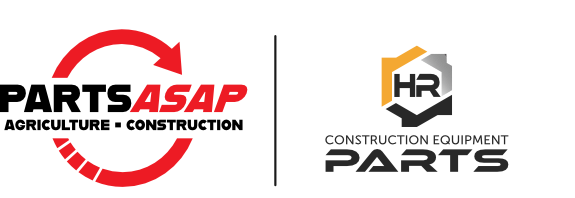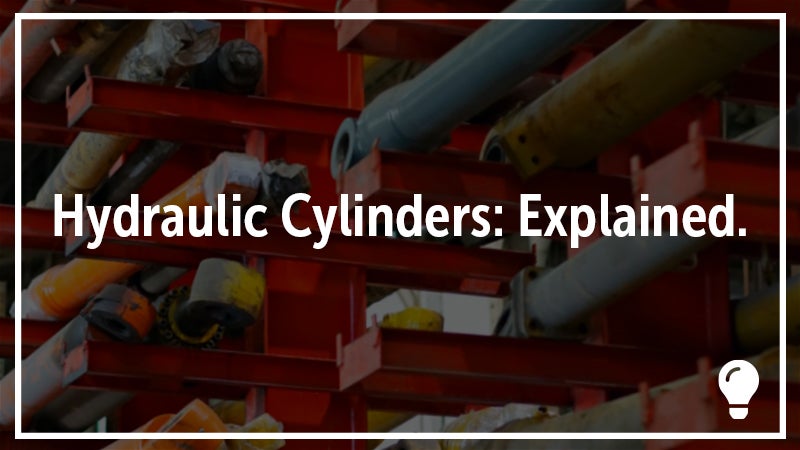
How to Tell if a Hydraulic Cylinder is Going Bad and Inspect a Hydraulic Cylinder
For such important parts, hydraulic cylinders seem to often get little respect in the everyday inspection checklist, but if a cylinder does fail on the jobsite the results can be catastrophic. So let’s jump into some quick everyday signs your cylinder might be going bad and then we’ll stop by one of H&R’s Recon and Rebuild shops and watch a specialist perform a cylinder inspection.
3 Signs a Hydraulic Cylinder is Going Bad
Leaking Oil
It sounds simple, but it’s so often ignored. If a cylinder seems to be working fine and it’s only getting a little oily and collecting a little extra dirt it might seem like no cause for concern, but the oil on the outside of the cylinder can point to bigger problems behind the scenes and even lead to real big problems coming your way.
A Lack of Steady and Effortless Movement
The movement of your cylinder shouldn’t remind you of a teenage, two-footed driver, juddering along in herky-jerky motions. The action of a well-performing hydraulic cylinder should be smooth and velvety, even under pressure.
Hot, Hot Cylinders
While many cylinders will heat up as they work -- that’s just the nature of working for extended periods of time under pressure -- overheating can point to a bigger issue. Poor oil filtration, friction inside the cylinder between moving parts, and low fluid levels can lead to increased heat. If you’ve checked the oil and the filters, it might be time to take a look inside, and that’s what we’re on to next.
❱❱ How to Inspect a Hydraulic Cylinder
Once you’ve gotten your cylinder off your machine and into your shop, inspection is pretty straightforward -- look for wear, check for misalignment, and search for corrosion. Follow along as an expert H&R tech examines a Komatsu hydraulic cylinder.
Position Your Cylinder for Disassembly
Since we work solely on heavy construction equipment, our cylinders often fall into two categories: really big and gigantic. The H&R cylinder Recon and Rebuild shop uses an overhead crane for moving cylinders and our heavy duty hydraulic disassembly bench is able to handle heavy and exceptionally long cylinders. The bench is designed to make disassembly go smoothly, no breaking backs or breaking parts. When you start your own disassembly, remember to plan for the fully extended cylinder and all of its parts to provide a clean working space to work on.
Disassemble and Inspect the Cylinder
- Extend the cylinder rod
- Remove the bolts from the cylinder head
- Use a roller guide to prevent the rod from falling
- Our cylinder station has guides integrated into it, but your’s might be as simple as some custom wood blocking. The important part is to make sure we don’t cause any damage in our search for damage.
- Extend the rod until you can see inside the barrel
- Spray acetone to be able to see any imperfections inside the cylinder and inspect for scratches or dents.
- A smooth barrel means smooth movement and ensures internal O-rings and seals will function properly.
- Spray acetone on the cylinder rod and inspect for any inconsistencies.
- A flashlight will help highlight trouble spots and even a little rub of the hand by an experienced tech can help discover trouble spots.
- Evaluate the cylinder rod for any bending or other unevenness.
- Even the slightest bend can lead to issues down the road.
Next steps
- If your cylinder passes inspection, you’ll want to reassemble it and now’s the perfect time to start with all new seals or other heavy worn components of the cylinder.
- The cylinder in the video above is actually in it’s final inspection (there’s three inspection spots for our cylinders at H&R), but if a cylinder passes this final inspection it’ll finish out with Recon and Rebuild and then move to painting, palleting, and shipping.
We hope you found our inspection and signs to watch for in cylinders was just confirmation of the great processes you already have in place, and, if not, they were helpful in both your diagnosis and your repairs. If you’re searching for a cylinder solution for your machine, of course, we’re always here to help -- just drop our parts specialists a line.



